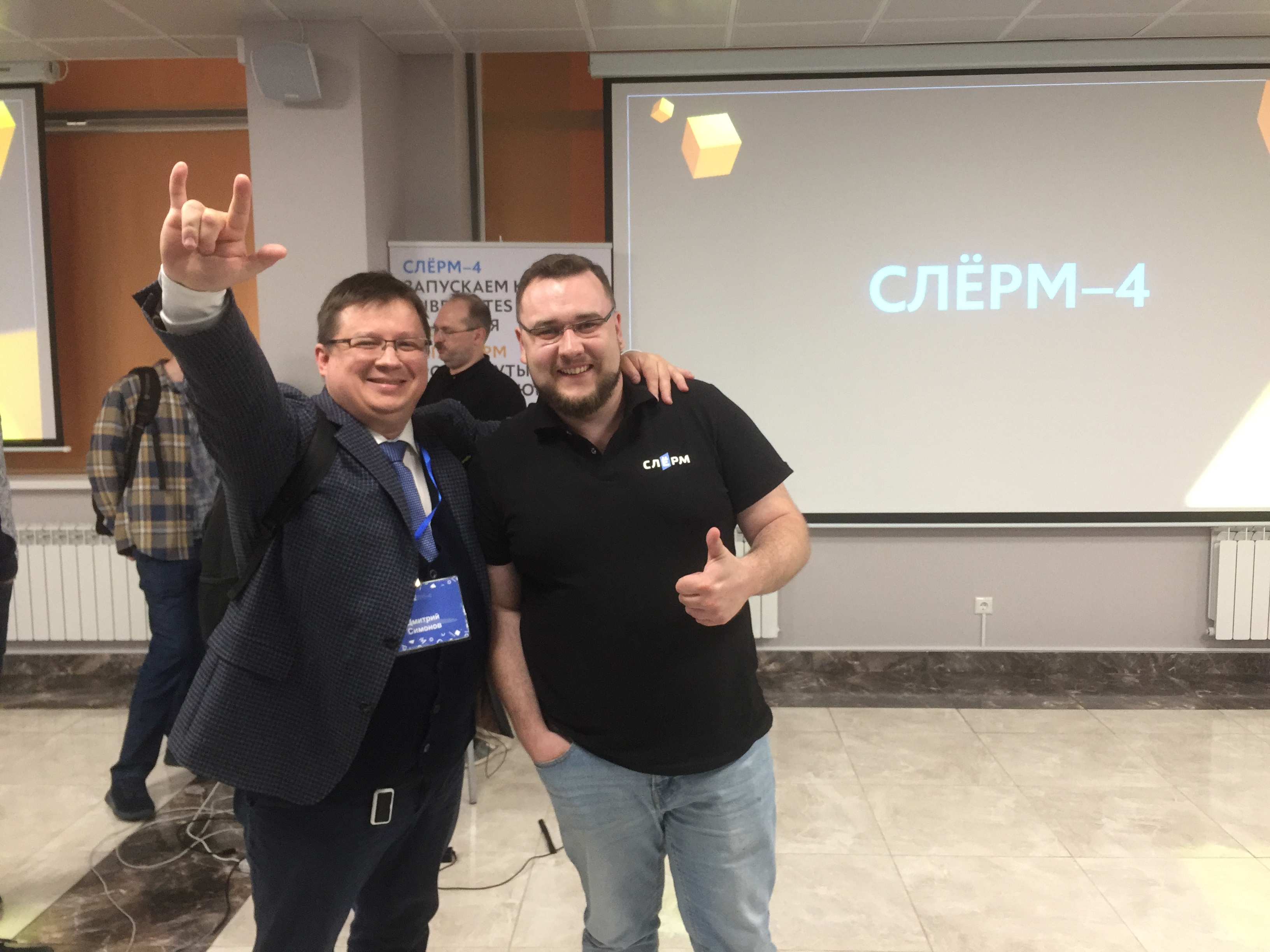Slurm - an easy way to break into the Kubernetes topic

In April, the organizers of the Slurm - Kubernetes courses knocked me - to test and tell my impression:
Dmitry, Slurm is a three-day intensive Kubernetes event, a tough training event. It is unlikely that you can write about him, if you just sit for two hours in the first lecture. Are you ready to fully participate?Before Slurm, one had to go through preparatory online courses on ansible, docker and ceph.
Then in the turnips to take the code and precise instructions, which already at the lectures to pass each command line by line with the leading.
- I confirm that I am ready to fully participate in both courses.And after that, hard work for 6 days (basic Slurm and MegaSlerm) was provided in the audience, full of sysadmins.
Fountains
What is the difficulty of developing services in general? Here, for example, business asks for an advertising newsletter push! It would seem that there is a full-stack developer with a website and mobile workers with a mobile application. Task for 15 minutes. Let's tell business what we can do in a day!
')
And here it turns out that the guns have never been sent. In advance, the connection of alien or self-hosted platforms was not made by pushing them. And this is not 15 minutes and not an hour, well, if you connect it in a week. Started magic and magic. Everything is incomprehensible, strange and unpredictable.
The development has become completely unpredictable for one reason only: they did not take into account that, in addition to the business tasks layer, there is also an infrastructure layer.
If the business tasks layer is a fountain, spewing a lot of small tasks, hypothesis testing and visual whistles, then the infrastructure is its pipes. Here we need a planning horizon of at least six months ahead.
Pipes for fountains
Due to the complexity and the requirements to be very attentive to the little things, specially trained people are engaged in the development of "pipes": Devops, who have grown out of the most experienced administrators and developers. Their work is planned and strictly consistent. They are like bridge builders - any mistake leads to the fact that an easy business task for 15 minutes suddenly turns into infrastructure rescheduling for many days and money.
Slurm is currently the only course in Russia (known to me) that teaches building infrastructure in a standardized way, allowing at least to level planning errors. I was on the Kubernetes courses, and in September I'm going to a new DevOps course.
Slurm was invented by Southbridge, an administrative outsourcer who built dozens of fountains of various shapes. Southbridge is a certified KTP and KCSP (CNCF, Linux Foundation Member).
What exactly are taught in the Kubernetes courses?
How to organize everything that the developers have done and that it does not fall?
- Work with Kubespray
- Installation of optional components
- Testing and troubleshooting the cluster
How to make the authorization of users (developers) in the cluster to work with the cluster itself?
- LDAP (Nginx + Python)
- OIDC (Dex + Gangway)
How to protect against hackers at the network level?
- Introduction to CNI
- Network security policy
And generally safety!
- PodSecurityPolicy
- PodDisruptionBudget
We do not hide anything, - we are telling in detail what is under the hood
- Controller structure
- Operators and CRD
Stateful applications in a cluster
- Starting a database cluster using PostgreSQL
- Running RabbitMQ Cluster
How not to store multiple passwords and configs in the clear
- Secrets Management in Kubernetes
- Vault
Fingertip horizontal scaling
- Theory
- Practice
Backups
- Backup and restore a cluster using Heptio Velero (formerly Ark) and etcd
Easy roll-out in test, stage and production
- Lint
- Templating and Deployment Tools
- Deploy strategies
There is also a course on steroids, there everything is generally hardcore. However, after the basic course you can already build your fountain.
After Slurm, the participants were left with artifacts - a video of all the days, detailed instructions for each item, along with exact recipes, whose commands can be copied stupidly to collect either a backup solution or a solution for test environments or something else.
That is, everything is so simple. Yes. He came for a few days, plunged into the topic, received accurate recipes and returned to the workplace to build the project's infrastructure - simply, correctly and, most importantly, predictably in time. Magic and witchcraft are over, it remains just to work.
What is the result?
At the end of the race for a few days comes the feeling that the real serious projects are being built by almost the devops themselves. And it is surprising that all the material covered is understandable, I reproduce it already on my own servers every day.
Fortunately, the entire audience moved to chat cart, where even after many weeks there is life.
What's next?
The organizers in the fall are preparing Slurm Devops, I am already preparing. I’ll write about this soon in my tech-idir channel in the @ctorecords cart .
Source: https://habr.com/ru/post/459498/
All Articles